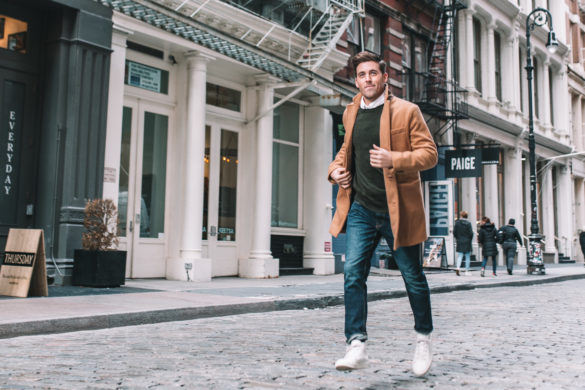Custom. Bespoke. Unstructured. 3-Piece. Made-to-measure. Double-breasted. When it comes to traditional suiting, the options are almost overwhelming. Not to mention there are certain formalities and suits for different occasions. Trends with men’s suiting have changed over the years, while some fashions are recycled or turned on its head altogether. The attitudes towards workwear and suits have definitely shifted this past year as work from home has been implemented and large social gatherings have been placed on hold. Here’s my hot-take on the suit and its place in your closet! In each post, I’ll be making the case for why the article of clothing deserves to be a staple in your closet. I’ll be recommending my favorite style as well as offering different price points & options as well! There aren’t many things more traditional or standard than the essential suit! I’ve broken this staples post into two tracks because of the suit’s customization. I’ve listed my go-to for a custom / made-to-measure suit and ready-to-wear (or off the rack!).
I’ll be the first to tell you – I pretty much only wear suits on occasion. Literally, for special occasions: weddings, funerals, holidays. I do believe that dressing well sets you up for success, but my lifestyle for the last 8 years has been pretty active and on-the-go.. and a suit is typically not what I’ve gravitated towards for more day-to-day wear. When it comes to your suit, there are 3 traditional suit colorways that should be in your closet for those occasions that need them: Navy, grey and black. These will cover you for everything from weddings to funerals and will just give you a great foundation to build out your suit situation. You can add a pattern to these colors by getting a plaid, windowpane, or pinstripe variation – or keep it solid. These might seem a bit boring, but from there you can now add a suit with more personality and style. A fun fabric like corduroy or linen makes great seasonal statement pieces and often lets you mix and match your jackets & pants. During the winter months, I tend to wear thicker wool or corduroy suits. In the summers and to the annual Veuve Polo Classic you will only see me sporting an unstructured linen suit. My brown linen suit has been a perfect spring and fall suit, as I can dress it for warmer days, styling it with no socks, light and bright shirt & tie, or throw on socks and a knit tie for a fall feeling. Athleisure’s influence has been undeniable in today’s more modern suits: technical fibers with more stretch and comfort have become standard and unstructured jackets for guys-on-the-go.
“The term “suit” is derived from the French term suivre. which means “to follow.” In other words, the jacket follows the pants or vice versa. So, a suit is a combination of a jacket and a pair of pants in a matching fabric. It’s not just the color of the garments that is the same, but also the fabric composition.
By the start of the Victorian era (which lasted from 1837 to 1901), the first and foremost garment a man would wear was a frock coat. It was basically a black coat that resembles modern overcoats. It had a single vent in the back and was either single- or double-breasted. In terms of length, it reached down all the way to the knees; that’s why it resembles an overcoat. While the single-breasted version of a frock coat was more common, the double-breasted version was more formal (and was also known as the Prince Albert). Later in the Victorian era, the frock coat basically split up into two different elements. On the one hand, we had the morning coat that kept the tails; on the other hand, we had the lounge suit which lost them.

As we started the 20th century, the suit, as we know it today was pretty much developed. From that point on, the shape was defined, it was merely the details that changed. It could be the lapel width, the jacket length, the buttoning point, the height of the gorge, the type of fabrics that were used, and so on. Overall, it was just an adaptation to an existing model.
In the first decade of the 1900s, also known as the Edwardian era, the lounge suit persisted. It became more and more popular. The more formal frock coats and morning coats were still around, but were typically worn by older men, and lost ground very quickly.
The 1920s were an exciting decade for the suit as it went from super slim to fuller towards the end. Right after World War I, the suit had a strong military influence. The jacket was cut trim, maybe slightly longer at a higher buttoning point, and trousers were quite slim with cuffs and relatively short. However, by the end of the decade, fashion-forward suits already had the precursor of the drape suit, which meant there was more fabric in the chest, and also the pants were cut a little wider. Drape and the drape suit really became popular in 1930s England in the US.

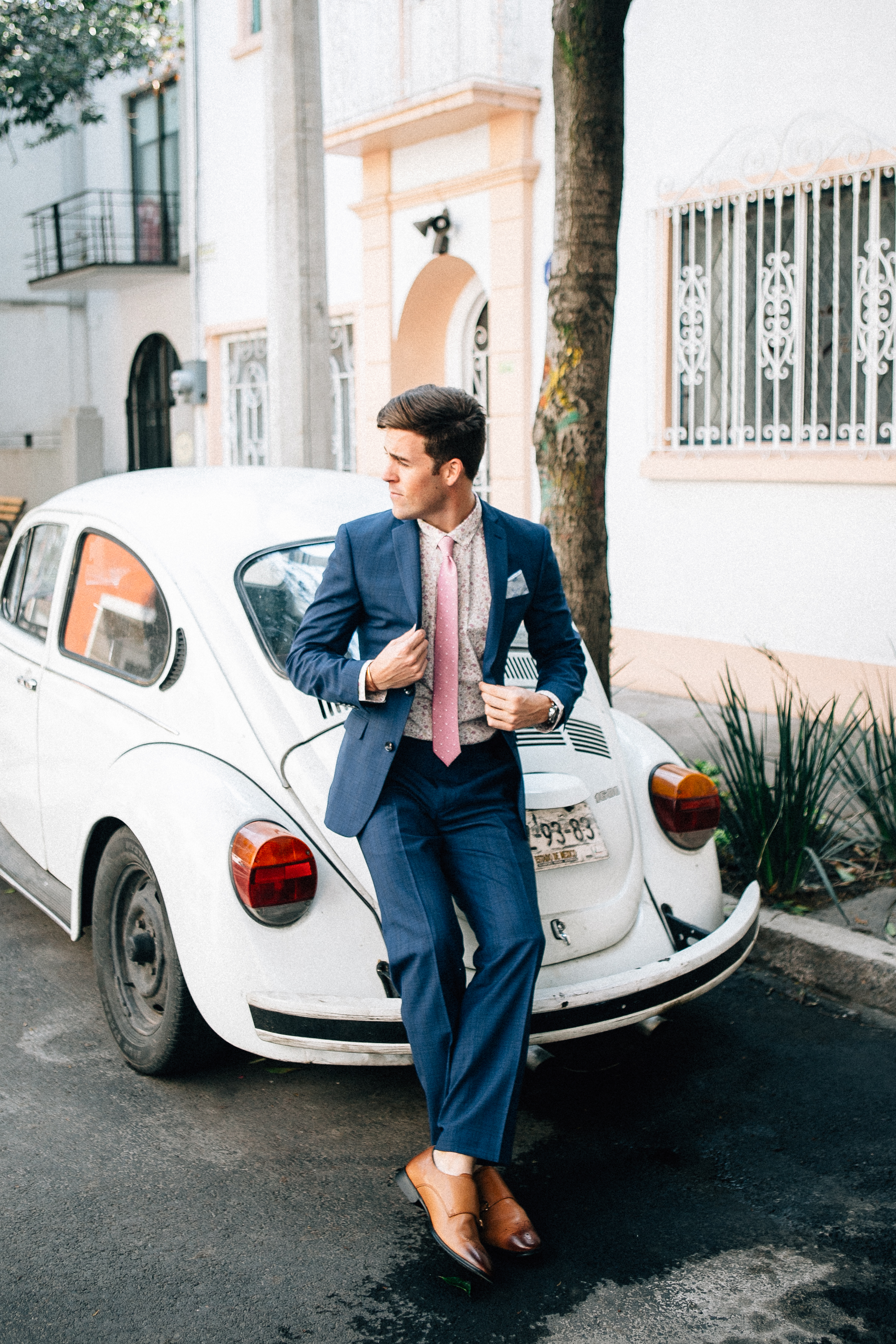


The 1930s were characterized by a suit that had a heavy drape cut with a wide shoulder, a lot of waist suppression, high-rise trousers that were just cut very full and just tapered slightly towards the shoes. It was the number one style in England and in the US but also, places like Vienna. Jackets were typically a bit longer and had no vents in the back for an ideal clean line when you would stand. Also bear in mind, the fabrics were sold quite heavy so they draped really well and they didn’t wrinkle very much. The look was very masculine and it built the basis of a very heroic look on the silver screen. Just look at Cary Grant or Clark Gable who perfectly used the suit to underline their personalities in the movies. Overall, a 1930s drape style was a little more refined, more tapered towards the leg compared to the late ’20s suits. Even today, the 1930s are often referred to as the “golden age of classic menswear,” in big part because of the way the suits were designed. You can learn more about it by checking out our eBook, Gentlemen of the Golden Age.
In the following decade, the suit changed a great deal. World War II meant that everything had to be rationed, and so there was no more fabric for these elaborate full-cut large suits. Instead, the 1940 suits were characterized by minimalism. The gray flannel suit became the option of choice for professional everyday wear. It wasn’t double-breasted, but rather single-breasted, and it had narrow lapels and a very trim-cut trouser without cuffs, in order to save fabric. For the same reasons, waistcoats or vests became unpopular. If you look at the suit from the 1940s, it is very close to the fashion of a 2020 suit, because it’s lean, trim, and overall very slim. Of course, the fabrics were still a lot heavier than they are today and they also had a bit more texture than what you would get today. The exception in the 1940s minimal suit was the rebellious Zoot suit. It was a product of the counterculture rebellion youth, particularly in African-American and Mexican communities. They had really baggy pants, a long jacket, and everything was oversized and excessive. The shoulders were super padded and often, people criticized it as being unpatriotic because it put your own idea of fashion beyond the rationing of fabric.

During the 1950s, the post-war rebellion definitely had an impact on the suit. To the end of austerity, some people went back to the suit style from before the war so lapels came wider, pants had pleats again, and it wasn’t as slim anymore. Pleated pants were particularly popular because they allow for a range of movement and more comfort and that, by the way, is still true today. The vest in a three-piece suit continued to decline because central heating was more or less well established at the time and so the need for extra heat inside had vanished. Again, it was a post-war period, and just like after the 1920s when there was this post-war rebellion against the previous generation’s style, the same thing happened in the ’50s.
It wasn’t just the zoot suit but many other young men rebelled against the style of their fathers and grandfathers by wearing t-shirts or jeans or leather jackets. Another example of this rebellion, maybe so in a more subtle way, was the Ivy League style which was epitomized by the sack suit style jacket. It is usually defined by a three-roll-two jacket with a single center vent and pants without pleats. At the end of the ’50s, we saw yet another subculture in suits known as the Mod suit. It was slim-fitting with narrow lapels. It was worn with narrow ties, non-pleated pants that were very thin and straight cut. For good examples of 1950 suits, you can look at Frank Sinatra or the Rat Pack, they really epitomized the style of the time.

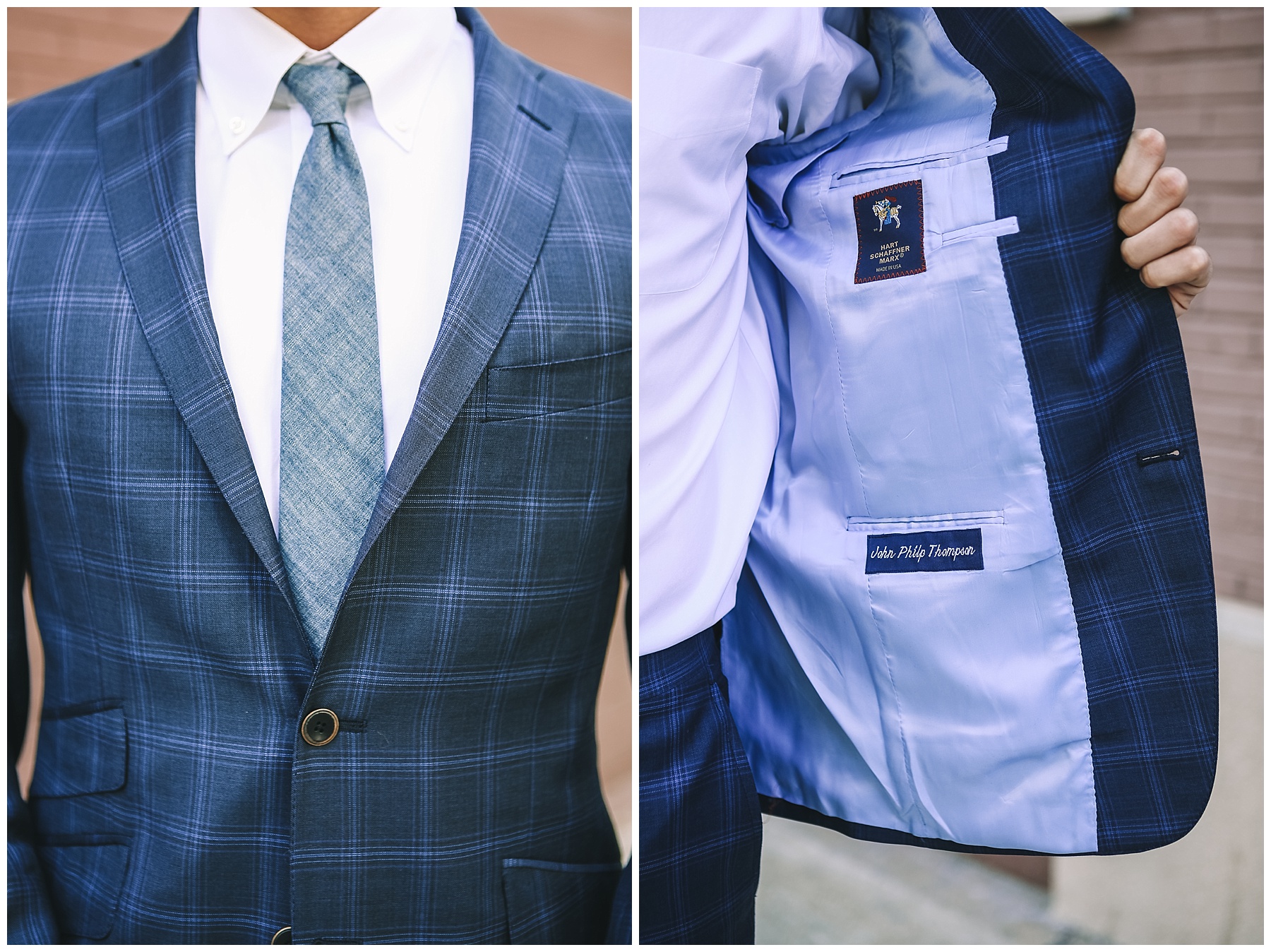
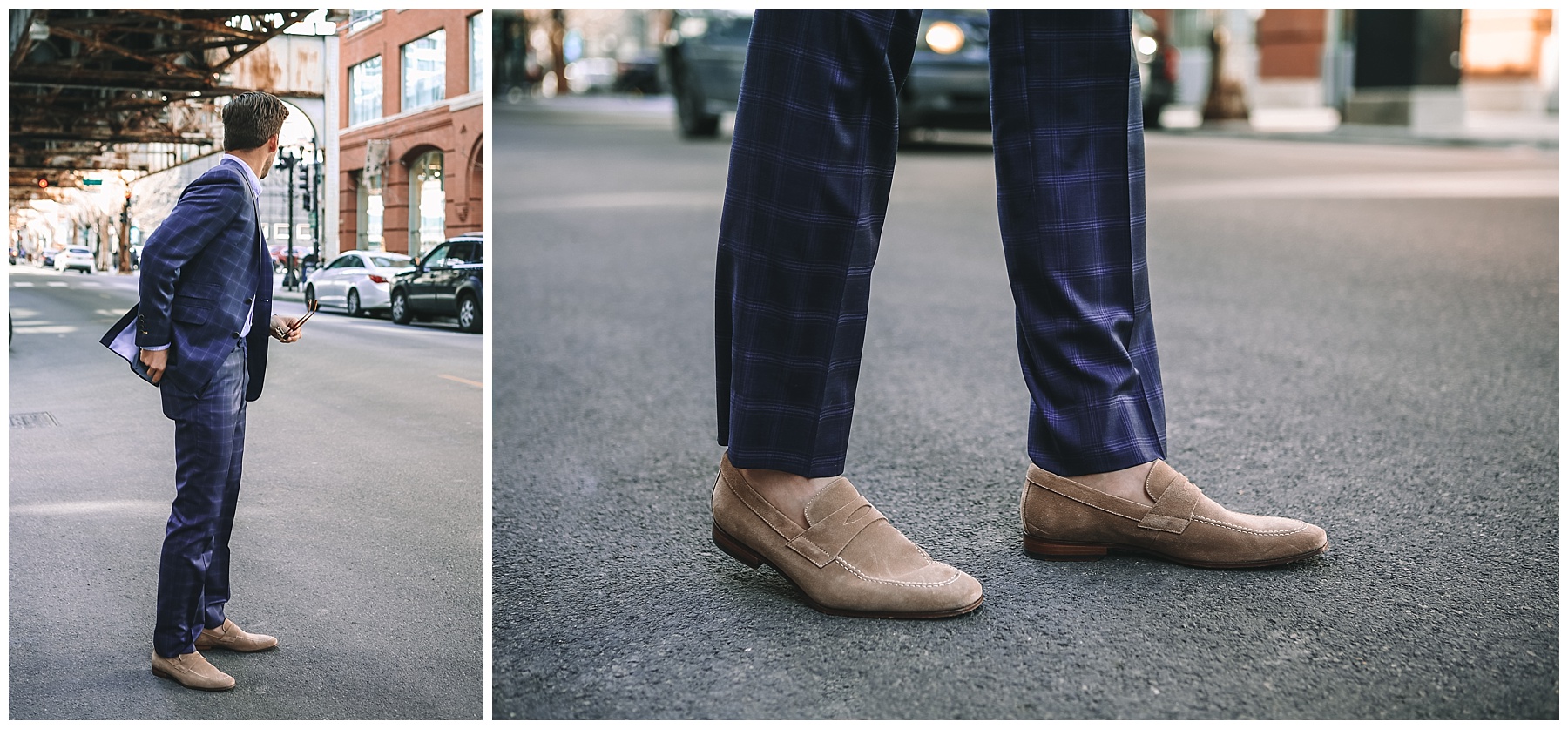



Nevertheless, with the general resurgence and interest in the topic of suits and classic menswear, there are probably more bespoke tailors today than there were 20 years ago. Thanks to the Internet, interest groups from all across the world can now connect, share, and drop their knowledge and so the general knowledge about the suit and classic men’s style has definitely increased.
In most recent years, the casual three-roll-two jacket with more natural shoulders in a slim silhouette and sometimes even string trousers have become more popular, so it’s all about getting more casual with more texture and brighter colors in a jacket that is soft and unstructured and sometimes, even made out of a knit fabric which is extremely flexible and feels more like wearing a sweater rather than a traditional suit jacket.”*


Bespoke is one of those buzzwords that has been beaten to death, but it essentially means custom. A suit made and tailored just for you. I now own a few custom suits and let me tell you when a suit really fits you like a glove the only thing I can tell you it feels like is *butter*. It’s almost like a second skin – in the best way possible – not one that’s not stuck gliding across your body, but moving with you. The only downside to custom suits is that if you gain 5 lbs., it feels like you’ve gained 20 lbs. Because everything is measured precisely to your body when the suit is made, and fluctuations feel exaggerate and the suit can become tight real quick. I know so many friends who get a custom suit for their big wedding day, and since they got it made when they were in “wedding shape,” it doesn’t fit them two years later. If you have the budget for this and feel like your weight is in pretty stable condition, I’d recommend this route for you!
Today, a middle ground has been bridged between full bespoke and off-the-rack.. enter made-to-measure. Made-to-measure offers the quickest and most efficient way to have a beautifully fitting suit made to your own specifications. Today’s made-to-measure suit may show more signs of being finished by hand – traditionally a sign of bespoke tailoring – but, by the same token, elements of bespoke tailoring, such as the main seam in the seat of a pair of trousers, are likely to be machine-finished.
Custom/Made-to-Measure suits:
- Enzo Custom – This is the butter I was talking about. I have a few custom suits from Enzo and they are without a doubt my favorite and best-fitting suits. With 6 showrooms across the states, Enzo’s tailors take over 30 measurements and offer insider knowledge on fabric and customizations tailored to you. They have hundreds of fabrics to choose from and customize everything from lining to buttons. I think the price is really reasonable for this bespoke suit as well!
- Knot Stanard – A full custom clothier that also offers custom shirting and outerwear also! The brown linen suit which I mentioned at the beginning of this post was my first custom suit and with Knot Standard. It was my first time to have fun with a suit, adding a bamboo print lining and my sign-out “STAY RISKY” embroidered underneath the collar of my jacket. The fit is fantastic and with 10 locations across the states, a customized suit from Knot Standard is worth it!
Ready-to-wear suits:
- Bonobos’ “Jetsetter” suit – Bonobos is as close to custom as you can get with all of their different suit fits. They offer Standard, Tailored, Athletic, and Slim fits – one for every body. This suit jacket features modern notch lapels. It’s double-button, double-vent, with non-functioning button cuffs, Bemberg lining, and an interior passport pocket for when you travel. The pants feature a classic hook and bar closure and button-through back pockets and are partially lined! Also offered in 9 patterns or colorways!
- J. Crew’s “Ludlow” suit – Introduced in 2008, J. Crew proved you could get a quality suit that fits well at a fraction of the price. Today, the Ludlow comes in two fits and new fabrics from renowned mills every season. They cut this suit in fabric from Duca Visconti di Modrone, an Italian mill known for making premium fabrics since 1838.
- Suit Supply – This Amsterdam-based suiting company has great quality and a signature suit that is hard to beat. They also offer great shirting, shoes, and accessories, too! Suit Supply also has some of my favorite unstructured linen blazers – perfect as the weather starts warming up!
- Hackett London – I came across this British clothier while on a trip in London. With some great Saville Row-inspired English styles, their off-the-rack pieces look quite fashionable and are constructed with English sensibility They also now offer made-to-measure with their “J.P. Hackett No.14 Savile Row” shop!




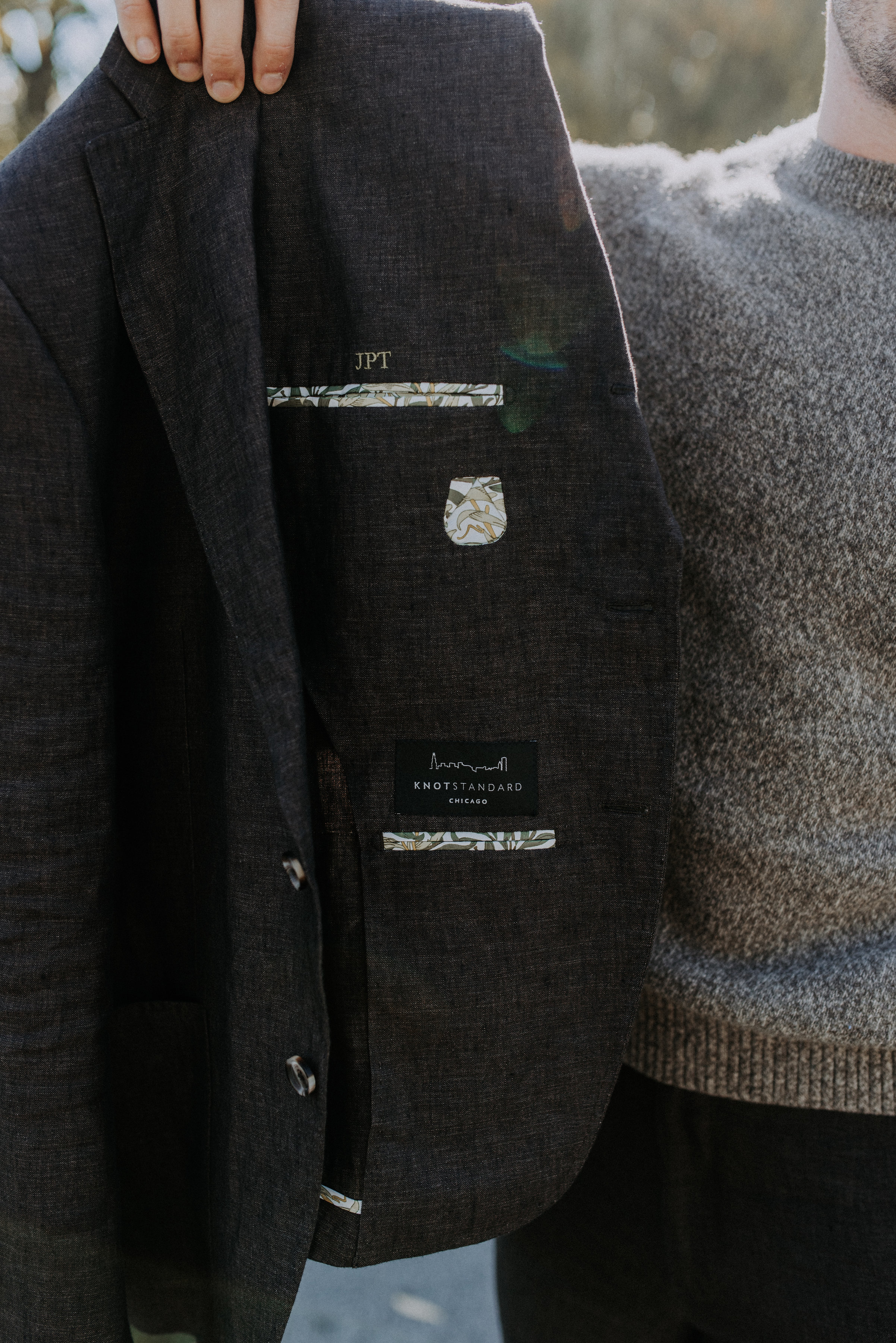

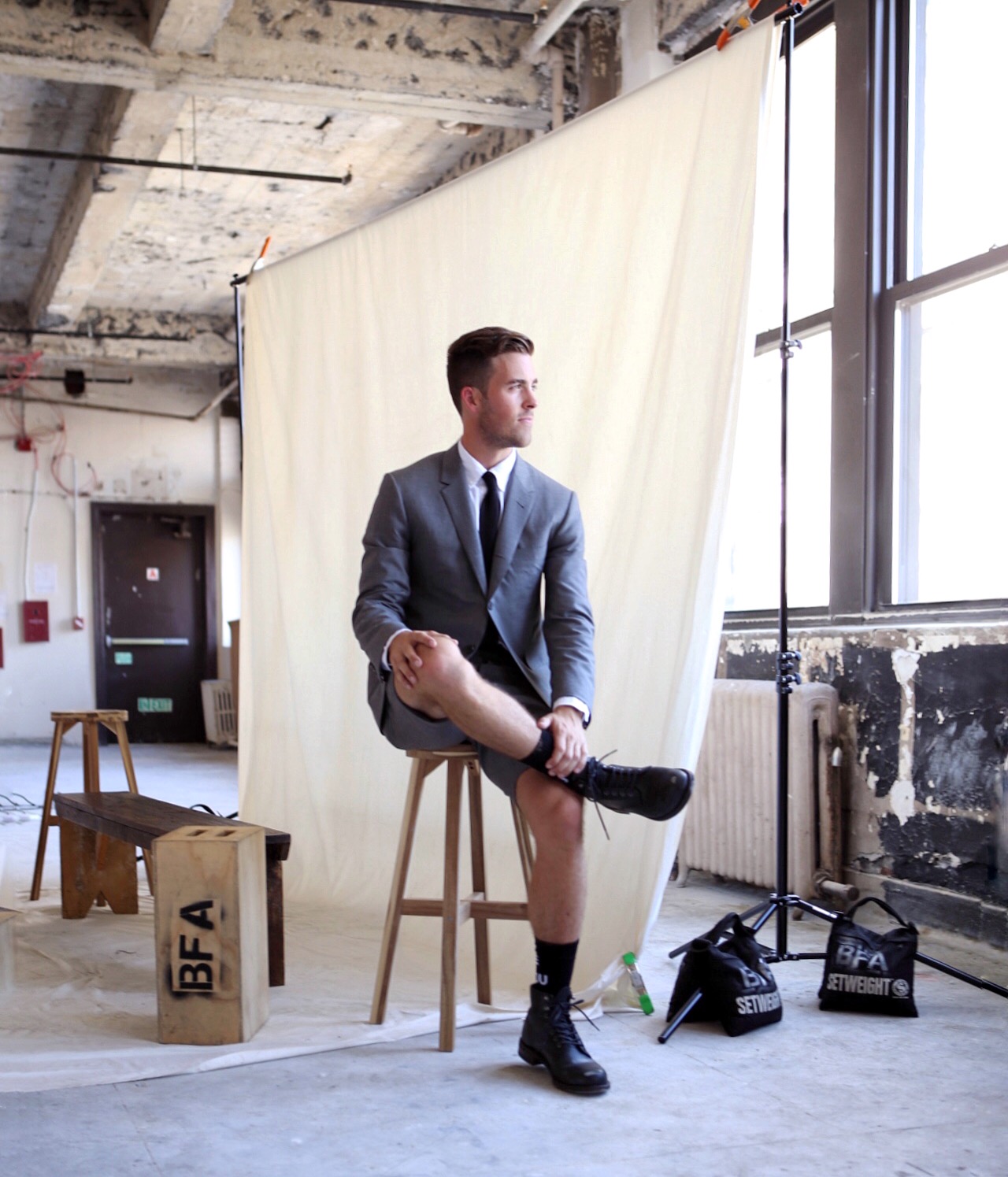








What is your favorite suit to wear?! In this series, I’ll be deconstructing the essential staples in your closet to better acquaint you with the foundational must-haves. They are simple, but crucial for building any outfit. I’ll be covering topics like jackets, loafers, essential accessories, and more! Let me know if there’s a topic you’d like me to cover as well! My goal is that by the end of 2021, you are set up for success with the best staples out there!
Stay Risky,
– John
* via Gentleman’s Gazette
Photography by: Ali Stone, Christian Blake, Carolina Rodriguez, Tyler Adam




